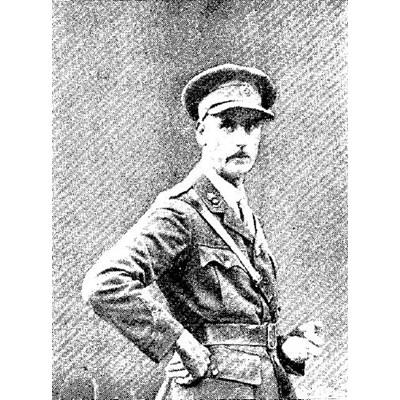Halley, James Mitchell White (1877 - 1918)

Major, 62nd Field Coy. Royal Engineers
Buried at Dottignies Communal Cemetery
Commemorated at Hillhead High School
Major J. M. W. Halley, Royal Engineers, who was killed in action on 24th October, 1918, was the son of Mr. Joseph Halley, of 43 Lawrence Street, Partick.
Particulars of his death have now reached the family from a brother officer. The writer says--" After the glorious victory of the Lys, in which the three field companies of this division had excelled themselves, they moved forward to the Scheldt. On the early evening of 24th October Major Halley and another officer crawled out to the river bank to have a look at it; suddenly a sniper fired at them from the other bank, instantly killing the Major. His companion lay still for two hours and was fired at repeatedly, but not hit. Major Halley's body was afterwards recovered. The funeral service was held at the graveside, and was very impressive. There was a firing party of our men, a bugler to sound the ' Last Post,' and four pipers from a kilted battalion played ' The Flowers of the Forest.' The divisional commander attended, and many staff officers and representatives from the different infantry battalions of the division. A neat wooden cross is being erected to-day. The wood for this cross was taken from some oak beams in an old windmill - this we thought appropriate for the Major, who was a great admirer of these weird-looking structures, which are so characteristically Flemish. We all felt when we left the cemetery that we had done full military honours to the gallant officer and true gentleman.. "
Major Halley had been wounded last year in Arras.
Major Halley was born in Glasgow forty-one years ago, and educated at Hillhead High School. He served his architectural apprenticeship with Messrs Lieper and Messrs. Burnett. He came to London about twenty years ago, where he worked in the office of Messrs. Niven & Wigglesworth for a few years, after which he became assistant to Mr. Mervyn Macartney, official architect to St. Paul's Cathedral, and he became a Fellow of the Royal Institute of British Architects. He was well known among architects for his deep and intimate knowledge of English Renaissance architecture, and his skill and ingenuity in applying that knowledge to modern design. Unfortunately most of his work was not carried into material existence.
His design for The Hague Royal Palace of Peace, for which he received one of the awards, and his design for the new Mitchell Library at Glasgow, which was placed on the short list, were his most sustained efforts. A small house which he built for himself in the Garden Suburb of Hampstead aroused a good deal of professional interest.
Major. Halley wrote a good deal for the architectural press, and had completed a book on Piranesi, which it is hoped will be published. He was deeply interested in St. Paul's Cathedral, and under Mr. Macartney he was responsible for much of the design in the Chapel of St. Michael and St. George there. He wrote a very interesting paper on "The Rebuilding and Workmen of St. Paul's Cathedral
from the Accounts," which received the R.I.B.A. prize in 1914.
Major Halley's deep knowledge and fine taste and great industry would have brought him high distinction in his profession if he had lived. He was twice married; his second marriage took place on his last visit home.




